ZELDA NO DENSETSU - KAMIGAMI NO TRIFORCE
( Legend Of Zelda - A Link To The Past )
|
|
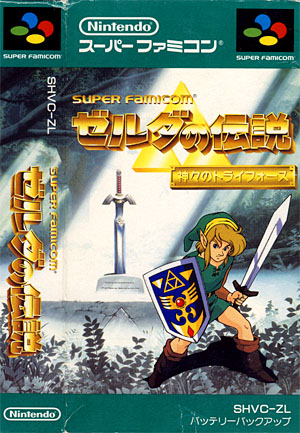
|

|
|
ゼルダの伝説 神々のトライフォース
©1991 Nintendo.
Release: 1991-11-21 (¥8000)
Cartridge SHVC-ZL
Action/Adventure



Released in America as
THE LEGEND OF ZELDA:
A LINK TO THE PAST
( SNS-ZL-USA & SNS-ZL-USA-2)
|




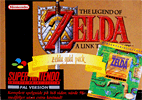

Released in Europe as
THE LEGEND OF ZELDA:
A LINK TO THE PAST
( SNSP-ZL-XXX )
|
|
After the initial success of Zelda for the Famicom system,
a sequel was inevitable. Zelda no Densetsu: Kamigami no Tri-Force
(aka The Legend of Zelda: A Link To The Past) is
the third opus in the Zelda series, one of Nintendo's most
popular and flagship franchise that became a genre of its own.
During a stormy night, the young Link is awaken by a warm female voice.
Agahnim the dark priest has captured princess Zelda and holds
her captive in the nearby castle. She now telepathically pleads
Link for help and, without hesitation, he grabs a lamp and follows his heart.
But rescuing the princess is only the beginning of a long journey for our
young hero. The land of Hyrule is at stake and he is not yet
aware of the many dangers lurking out there - he will
retrieve the Master Sword, travel to the Dark World, reunite the
Tri Force and fight Ganon, his archetypal enemy who, once again, has
returned to conquer the Light World. The game features the overhead perspective
introduced by the first episode of the series. Link is equipped with a
sword and a small shield that can deflect enemy attacks and projectiles.
The sword can also be used in several different ways and a powerful spinning
attack can be charged up by holding the action button. But, most importantly,
our hero can use a hodgepodge of items and secondary weapons such as the
almighty Boomerang to stun enemies and collect items, the Bombs
to reveal secret passageways, the catching net to capture bees and
fairies and store them in glass bottles for later use, the Power Glove
to move large rocks and so forth. Exploration in the game is divided into
two major phases. In the first one, Link freely travels the world,
talk to villagers and buys new equipment. He then spends the rest of his time
in the game's different dungeons and defeat countless guardians hidden within
their deepest depths.
|
 Zelda no Densetsu: Kamigami no Tri-Force was first released for
the Super Famicom in 1991 (version tested here). The original Japanese
title could be translated as "The Legend Of Zelda: The Tri-Force of the Gods"
but the game was known in the rest of the world as
The Legend Of Zelda: A Link To The Past. All the religious symbols
were removed from the American and European versions of the game.
Zelda no Densetsu: Kamigami no Tri-Force was later re-released for the
Game Boy Advance in 2003 which also included "Four Swords", a special
multiplayer game where up to four players could explore dungeons and work as a team.
This Game Boy port shows differences with the original game - a sleeping mode
was included that allows players to stop and temporary save the game at anytime during
their journey. Then the screen resolution is also slightly smaller and the position of
some of the icons and menu items have changed. But, overall, despite some minor enemy
and item changes, both games are fairly identical. The game was also added to the
Wii's Virtual Console library in 2006.
Zelda no Densetsu: Kamigami no Tri-Force was first released for
the Super Famicom in 1991 (version tested here). The original Japanese
title could be translated as "The Legend Of Zelda: The Tri-Force of the Gods"
but the game was known in the rest of the world as
The Legend Of Zelda: A Link To The Past. All the religious symbols
were removed from the American and European versions of the game.
Zelda no Densetsu: Kamigami no Tri-Force was later re-released for the
Game Boy Advance in 2003 which also included "Four Swords", a special
multiplayer game where up to four players could explore dungeons and work as a team.
This Game Boy port shows differences with the original game - a sleeping mode
was included that allows players to stop and temporary save the game at anytime during
their journey. Then the screen resolution is also slightly smaller and the position of
some of the icons and menu items have changed. But, overall, despite some minor enemy
and item changes, both games are fairly identical. The game was also added to the
Wii's Virtual Console library in 2006.
|
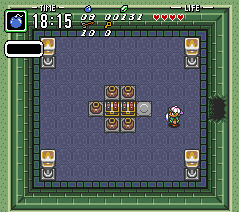 BS Zelda no Densetsu: Kodai no Sekiban
(ゼルダの伝説 古代の石盤), also known as BS Zelda no Densetsu: Inishie No Sekiban,
was a follow up to
Zelda no Densetsu: Kamigami no Tri-Force exclusively released for the
Satellaview in 1997 (Japan only add-on for the Super Famicom).
Using the Satellaview unit, players could download this second quest
and play new episodes based on the original game (The four different episodes were
broadcasted from March 1997 to April 1997). The main character wasn't
Link though but a small boy (and a girl) with a baseball cap and the game
was based on a real-time clock (picture on the right).
Today, most of the game has been retrieved and
emulated, but because of the "broadcast" nature of BS Zelda no Densetsu
Kodai no Sekiban, parts of the introduction sequence, title screen and live narration
are sadly still missing...
BS Zelda no Densetsu: Kodai no Sekiban
(ゼルダの伝説 古代の石盤), also known as BS Zelda no Densetsu: Inishie No Sekiban,
was a follow up to
Zelda no Densetsu: Kamigami no Tri-Force exclusively released for the
Satellaview in 1997 (Japan only add-on for the Super Famicom).
Using the Satellaview unit, players could download this second quest
and play new episodes based on the original game (The four different episodes were
broadcasted from March 1997 to April 1997). The main character wasn't
Link though but a small boy (and a girl) with a baseball cap and the game
was based on a real-time clock (picture on the right).
Today, most of the game has been retrieved and
emulated, but because of the "broadcast" nature of BS Zelda no Densetsu
Kodai no Sekiban, parts of the introduction sequence, title screen and live narration
are sadly still missing...
|
Teaser text from the American version:
Fantasy and Reality Collide
In A Land Of Enchantment
Venture back to Hyrule and an age of magic and heroes. The
predecessors of Link and Zelda face monsters on the march
when a menacing magician takes over the kingdom. Only you
can prevent his evil plot from shattering the land of Hyrule.
In your quest you'll venture into twisting mazes, dungeons,
palaces and shadowy forests. Test your mettle with mighty
swords and magical weapons. Or heft a boulder and hurl it at
your enemies. If the doing gets tough, dive into a river - you
can swim to escape! Learn powerful spells, locate magical
artifacts and solve the mysteries of the evil magician and the
hidden realm of Hyrule.
This exciting Super NES sequel to the Legend of Zelda and
The Adventure Of Link uses 16-bit power to create a quest so
colorful and detailed you don't just play it, you live it !
|
Game Staff (Copied from the American version's end credits) :
Executive Producer
Hiroshi Yamauchi
Producer
Shigeru Miyamoto
Director
Takashi Tezuka
Script Writer
Kensuke Tanabe
Assistant Director
Yasuhisa Yamamura
Yoichi Yamada
Screen Graphics Designers
Object Designers
Soichiro Tomita
Takaya Imamura
|
|
Background Designers
Masanao Arimoto
Tsuyoshi Watanabe
Program Director
Toshihiko Nakago
Main Programmer
Yasunari Soejima
Object Programmer
Kazuaki Morita
|
|
Programmers
Tatsuo Nishiyama
Yuichi Yamamoto
Yoshihiro Nomoto
Eiji Noto
Sarotu Takahata
Toshio Iwawaki
Shigehiro Kasamatsu
Yasunari Nishida
Sound Composer
Koji Kondo
Coordinators
Keizo Kato
Takao Shimizu
|
|
Printed Art Work
Yoichi Kotabe
Hideki Fujii
Yoshiaki Koizumi
Yasuhiro Sakai
Tomoaki Kuroume
English Script Writers
Daniel Owsen
Hiroyuki Yamada
Special Thanks To
Nobuo Okajima
Yasunori Taketani
Kiyoshi Koda
Takamitsu Kuzihara
Hironobu Kakui
Shigeki Yamashiro
|
|
|
G
O
O
D
I
E
S
|
|
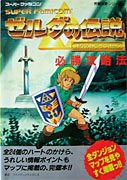
Japanese guidebook
|
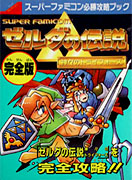
Japanese guidebook
|
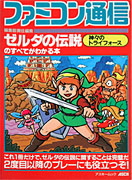
Japanese guidebook
|
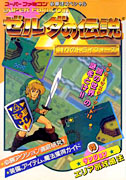
Japanese guidebook
|
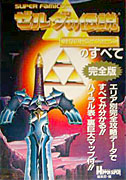
Japanese guidebook
|
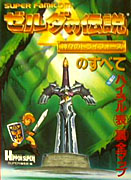
Japanese guidebook
|
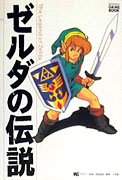
Japanese guidebook
|
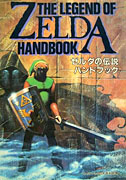
Japanese guidebook
|
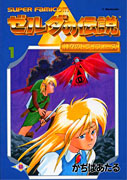
Japanese Comic
|
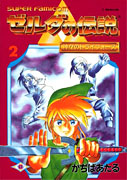
Japanese Comic
|
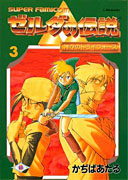
Japanese Comic
|
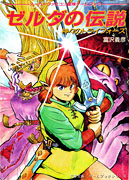
Japanese Book
|
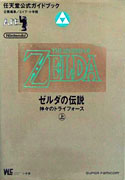
Japanese guidebook
|
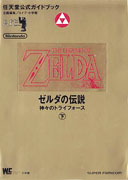
Japanese guidebook
|
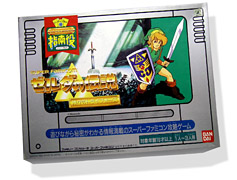
Japanese boardgame
|
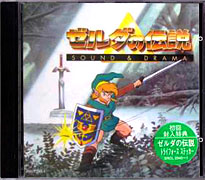
Japanese soundtrack
|
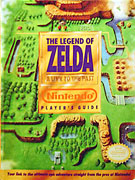
American guidebook
|
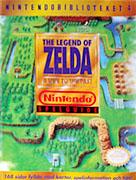
European guidebook
|
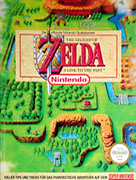
European guidebook
|
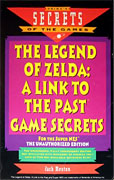
American guidebook
|
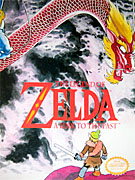
American comic
|
|
|
O
M
A
K
E
|
|
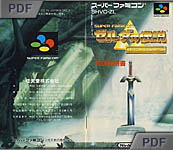
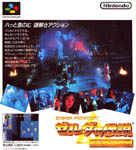
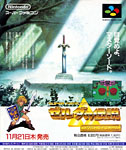
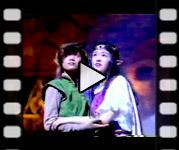
|
|
|
Click on picture to enlarge |
|
|
|
LK

|
|
Add your Pov here !
|
P
O
V
s
|
|
In my opinion, Zelda no Densetsu Kamigami no Tri-Force is at
the pinnacle of providing an exceptional and unforgettable epic adventure
with almost perfect game mechanics. Also, it hasn't aged a bit since 1992.
It was magnificent then and it is utterly magnificent today. My favorite aspect of
Kamigami no Tri-Force, and this is something people don't praise enough, is how
finely detailed the game really is - the way how the enemies' swords bounce off your
shield or the way how arrows stick to walls. The game also features a
treasure of unforgettable classic melodies that will stick to your soul for
the years to come, if not forever. Zelda no Densetsu: Kamigami no
Tri-Force is regarded as one of the finest Zelda game ever
created and I can only agree. A timeless masterpiece.
|
|
|
|